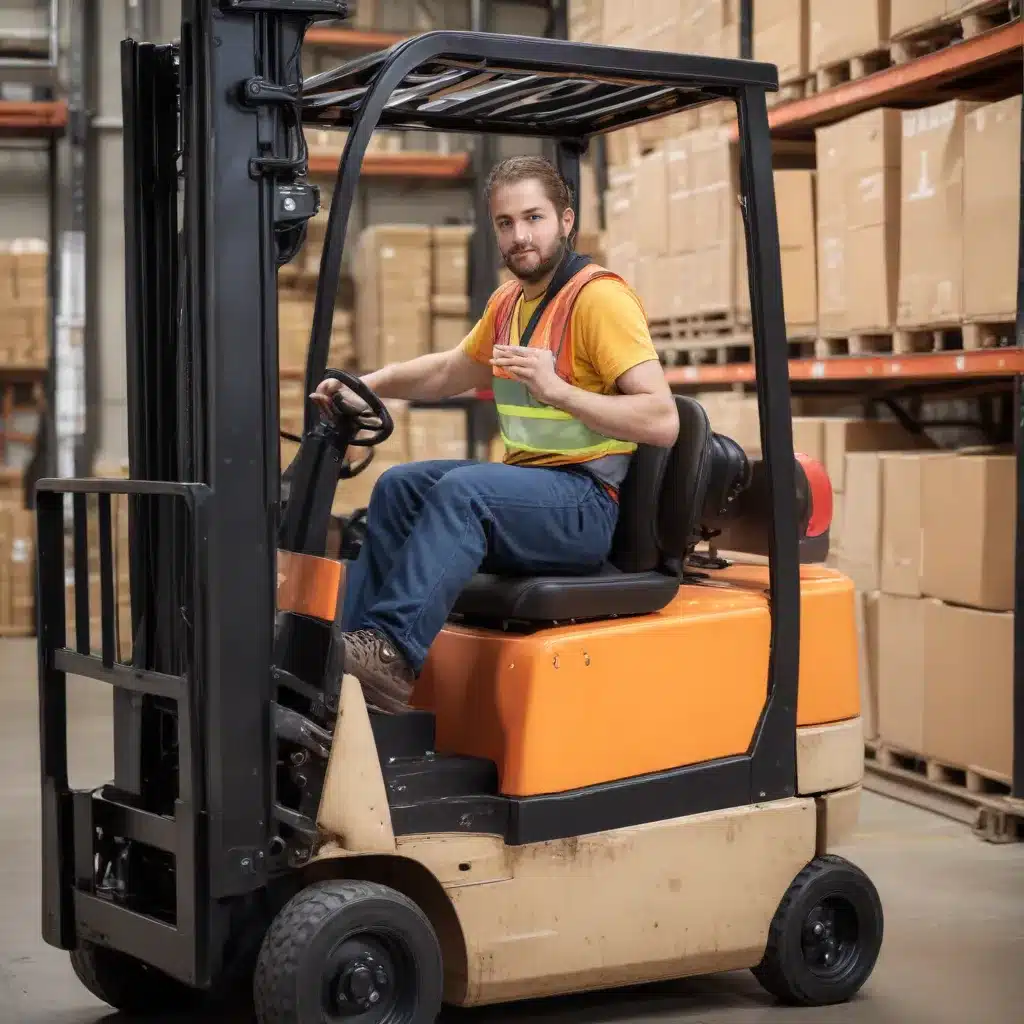
In the dynamic world of material handling, forklift operators play a vital role in ensuring efficient and productive operations. However, the physical demands of the job, coupled with the need to maintain focus and precision, can often lead to operator fatigue and diminished performance. As a seasoned industry expert in forklifts, warehousing, and logistics, I’m here to provide practical tips and in-depth insights on how to enhance ergonomics and reduce fatigue for forklift operators.
Prioritizing Operator Comfort and Efficiency
Forklift manufacturers have recognized the importance of operator well-being in driving productivity and job satisfaction. Companies like Konecranes have made significant advancements in their equipment, integrating ergonomic design principles to create a more comfortable and efficient working environment for operators.
Ergonomic Cab Designs
Operator cabins in modern forklift trucks and reach stackers are designed with the operator’s comfort and convenience in mind. Features such as adjustable seats, intuitive joystick controls, and ergonomic control panels allow operators to work in a natural and comfortable position, minimizing fatigue and improving efficiency. Additionally, these cabins are equipped with amenities like air conditioning, heating, and excellent visibility, providing a pleasant working environment that enables operators to maintain focus and productivity throughout their shifts.
Vibration Reduction Systems
Navigating uneven terrain can be a significant source of operator fatigue and discomfort. Manufacturers like Konecranes have integrated advanced suspension systems into their equipment to minimize vibration and provide a smoother ride. By reducing the physical strain caused by rough surfaces, these systems enhance operator comfort and allow them to handle loads more efficiently, leading to improved productivity and job satisfaction.
Operator Assistance Technologies
Forklift manufacturers are also incorporating advanced technologies to assist operators and boost their productivity. Features like automatic load-sway control, for example, can minimize load swinging during lifting and positioning, enabling operators to handle loads more efficiently and safely. These operator assistance systems not only enhance productivity but also play a crucial role in preventing costly equipment damage and ensuring uninterrupted operations.
Enhancing Visibility and Maneuverability
Visibility and maneuverability are essential for forklift operators to navigate their work environments safely and efficiently. Manufacturers have made significant strides in optimizing these aspects of their equipment.
Improved Visibility
Clear visibility is a critical factor in operator safety and efficiency. Forklift models like the Yale ERP-VL series feature large windows, strategically placed mirrors, and advanced camera systems to provide operators with excellent all-around visibility. By enabling operators to navigate confidently, accurately position loads, and avoid potential hazards, these visibility enhancements contribute to increased productivity and improved job satisfaction.
Enhanced Maneuverability
In warehousing and logistics applications where space is at a premium, maneuverability is a crucial attribute. Forklift models such as the Yale MRW-E walkie pallet reach stacker are designed with exceptional maneuverability, allowing operators to position loads precisely where they need them. This enhanced maneuverability not only boosts productivity but also helps reduce operator fatigue by minimizing the physical effort required to navigate tight spaces and manipulate loads.
Maintenance and Ownership Costs
Forklift ownership involves more than just the initial purchase price; ongoing maintenance and operating costs can significantly impact the overall investment. Manufacturers have recognized this and have designed their equipment to address these concerns.
Reduced Maintenance Requirements
The Yale ERP-VL series is engineered with a focus on lowering truck operating expenses, reducing maintenance costs, and extending maintenance intervals. By implementing design features that prioritize ease of service and durability, these forklift models help operators and fleet managers save time and money, leading to a more efficient and cost-effective material handling operation.
Optimized Power Sources
Forklift power sources can also have a significant impact on operating costs and operator experience. The Yale Power Suite offers a wide range of power options, allowing operators and fleet managers to select the most suitable power source for their specific application. This flexibility helps maximize operational efficiency and minimize long-term costs, ultimately contributing to a more satisfying work experience for forklift operators.
Embracing Technological Advancements
The forklift industry has embraced technological advancements to enhance operator support and optimize fleet management. Tools like telematics and remote monitoring systems provide valuable data to operators and fleet managers, enabling them to make informed decisions and improve overall efficiency.
Telematics and Remote Monitoring
Integrating telematics and remote monitoring systems, such as Yale Vision, allows operators and fleet managers to access real-time data on equipment performance and maintenance needs. This proactive approach reduces downtime, optimizes operations, and boosts job satisfaction by providing operators with the necessary tools and information to perform their tasks effectively.
Operator Involvement and Feedback
Forklift manufacturers like Konecranes value operator feedback and actively involve them in the development process. By considering the needs and preferences of the operators, these companies continuously improve equipment design and functionality, fostering a sense of ownership and pride among the operators. This inclusive approach ensures that the equipment meets the operators’ requirements, leading to increased job satisfaction and enhanced productivity.
Conclusion
In the ever-evolving world of material handling, forklift operators play a vital role in driving efficiency and productivity. By prioritizing ergonomics, enhancing visibility and maneuverability, optimizing maintenance and ownership costs, and embracing technological advancements, forklift manufacturers are empowering operators to work more comfortably, safely, and effectively.
As an industry expert, I encourage you to explore the latest forklift models and technologies that prioritize operator well-being and support. By investing in equipment that prioritizes ergonomics and operator assistance, you can unlock new levels of productivity, job satisfaction, and long-term cost savings for your material handling operations.
For more insights and recommendations, I invite you to visit Forklift Reviews, where you can find in-depth reviews, safety guidelines, and the latest industry trends to help you make informed decisions for your material handling needs.

